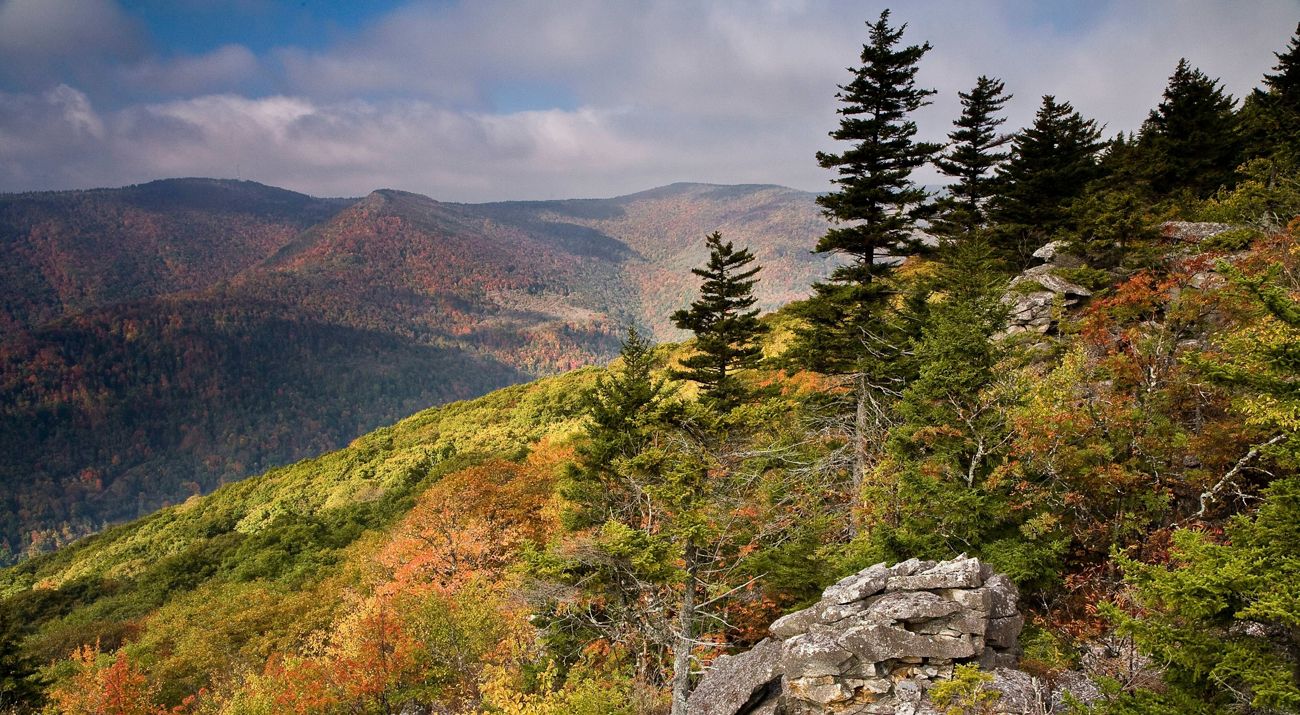Description
This rugged preserve sits near the 4,770-foot summit on the south slope of Mount Porte Crayon, the sixth-highest point in West Virginia. The preserve, which is surrounded by U.S. Forest Service lands including the Monongahela National Forest, features red spruce forests that are home to rare animals including the Cheat Mountain salamander and West Virginia northern flying squirrel. The preserve and the summit are accessible only to experienced hikers willing to bushwhack.
History
Mount Porte Crayon is named after writer and illustrator David Hunter Strother who used the pen name Porte Crayon.
Aerial photographs of the area indicate that much of the lands were deforested between 1880 and 1920. It is likely that the land was used for grazing immediately following the logging. The presence of open meadows, hawthorn meadows and early- to mid-successional forests is evidence today of this past heavy human use.
Why TNC Selected this Site
The area around Mount Porte Crayon is home to one of the best and largest existing examples of red spruce–northern hardwood forest in the Central Appalachian Forest region. This forest features an overstory of red spruce and an understory dominated by highbush cranberry. Weather conditions at Mount Porte Crayon can be extreme and many spruce trees here are “flagged” meaning they lack branches where high winds blow from the west. Red spruce forests are habitat for the federally threatened Cheat Mountain salamander and the federally threatened West Virginia northern flying squirrel.
The preserve is surrounded on three sides by the Monongahela National Forest and buffers the Roaring Plains and Mount Porte Crayon protected areas owned by the U.S. Forest Service ownership.
What TNC is Doing
The Canaan Valley–Dolly Sods conservation area, which includes Mount Porte Crayon, is one of the most important areas in West Virginia for the conservation of biodiversity. The importance of this area led the Conservancy to be active as early as the 1970s in mineral and land acquisitions for the U.S. Forest Service.
More recently, since the creation of the Canaan Valley National Wildlife Refuge, TNC has assisted the U.S. Fish and Wildlife Service in the protection of key properties within the Refuge boundaries. The Conservancy works with partners within the conservation area to restore and manage red spruce.
TNC also owns the Bear Rocks Preserve, a 500-acre tract adjacent to U.S. Forest Service land on Dolly Sods.
